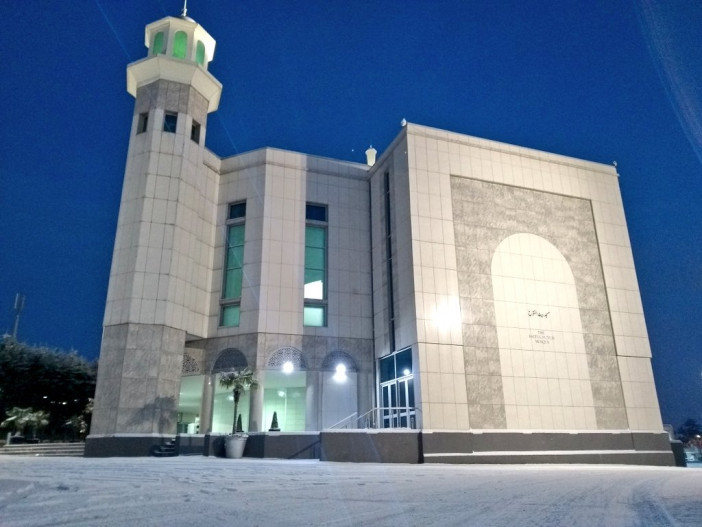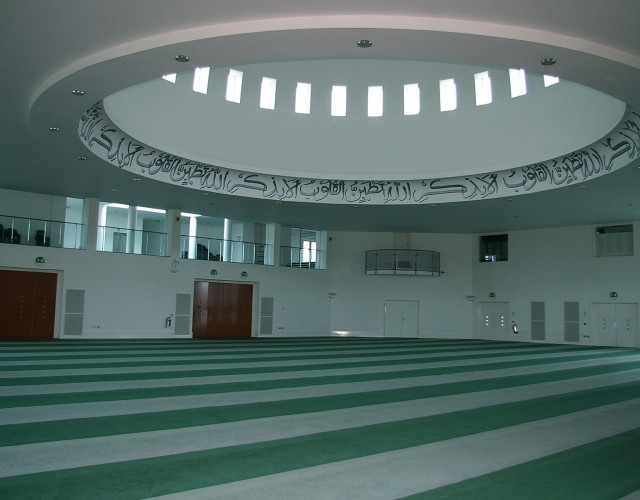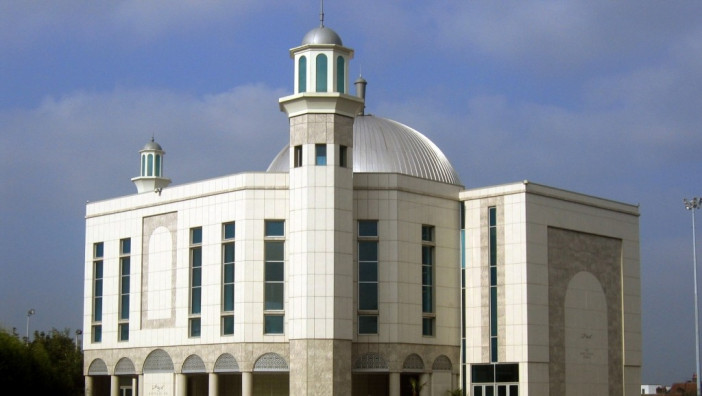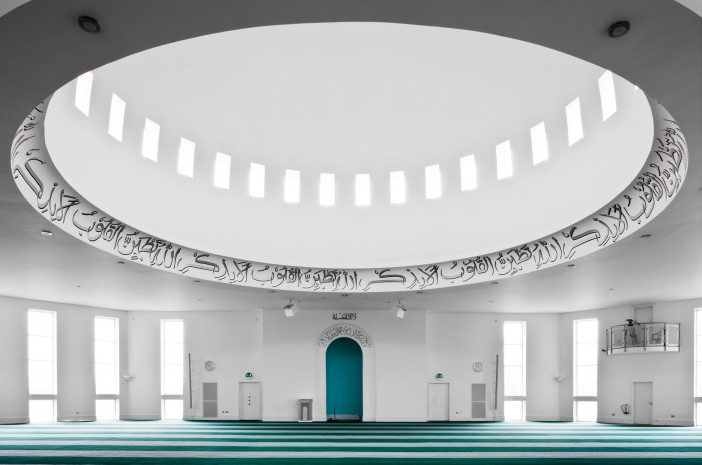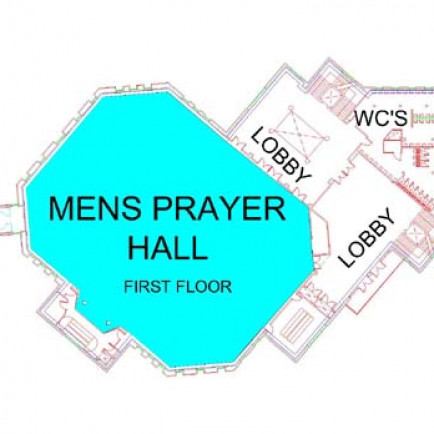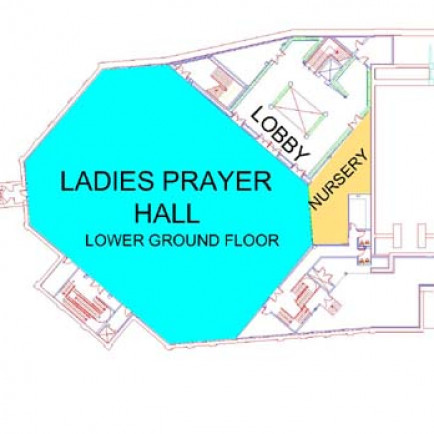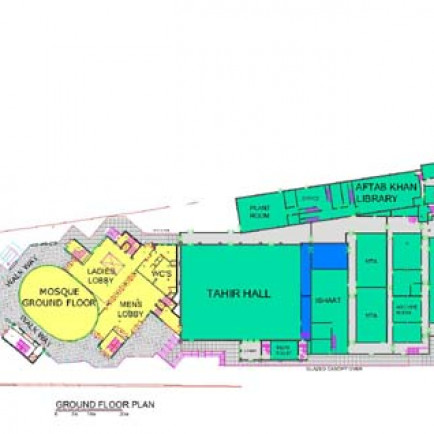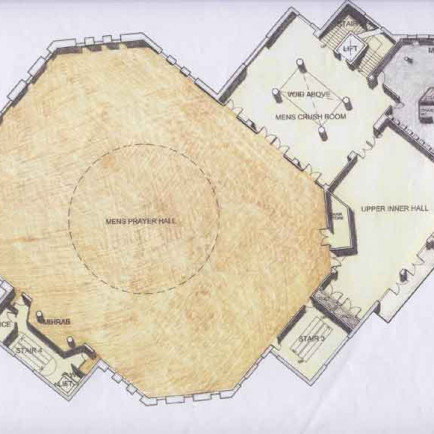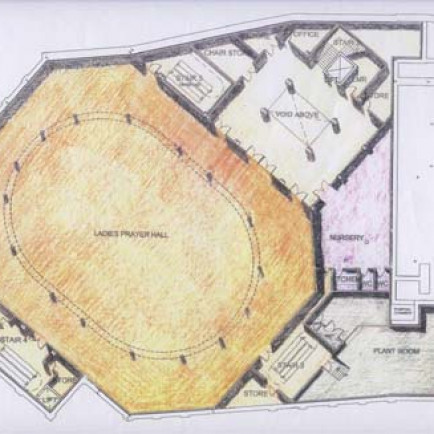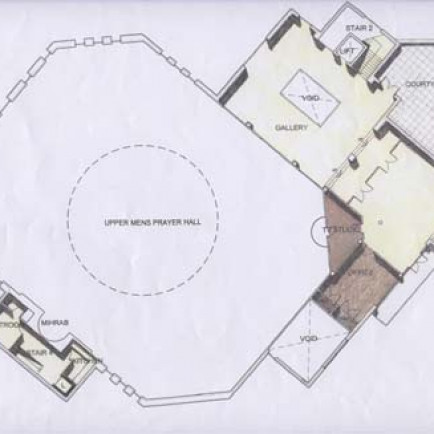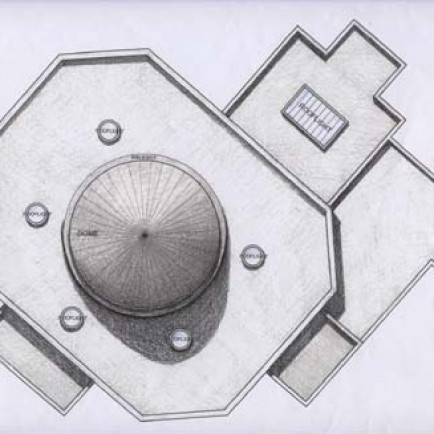Baitul Futuh Mosque
History
2003 Inauguration
Mirza Tahir Ahmad, who was the head of the worldwide Ahmadiyya Muslim Community at the time, launched an appeal for funds for the building on 24 February 1995, and the land, formerly occupied by an Express Dairies depot, was purchased on 29 March 1996. The designs were produced by Oxford architectural studio, Sutton Griffin. The foundation stone was placed by the late Mirza Tahir Ahmad on 19 October 1999 in a ceremony attended by 2,000 guests, and inaugurated by the current head of the worldwide Community, Mirza Masroor Ahmad, on 3 October 2003. The opening ceremony was attended by over 600 guests; those present included High Commissioners, Deputy High Commissioners, Members of European Parliament, Members of Parliament, Mayors of London boroughs, Councillors, university lecturers, and representatives of 17 nations.
Description
The Baitul Futuh Mosque, also known as the Morden Mosque, is a mosque complex in Morden, London. It is one of the largest mosques in Western Europe. Completed in 2003 at a cost of £15 million, entirely from donations of British Ahmadi Muslims, the full complex accommodates 13,000 people. The main mosque has a height of 23m above ground, and to maximise capacity the building extends below ground.
Baitul Futuh is located in the south-west London suburb London Borough of Merton. It is situated next to Morden South railway station, 0.4 miles from Morden Underground station (Northern line) and one mile from Morden Road tram stop. The Morden Mosque is notable for serving the greater community. Baitul Futuh has featured in national news for its homeless feeding and national/local community cohesion efforts, noted later in this article under 'Community Cohesion'. Similarly, the design of Baitul Futuh aims to combine modern British architecture.
Baitul Futuh has a history of notable events. It featured in the 2015 TV documentary 'Britain's Biggest Mosque' by Channel 5. Similarly, the mosque is host to the weekly Friday Sermons delivered by the Head of the Ahmadiyya Muslim Community, Mirza Masroor Ahmad, which are relayed live across a global TV network.
The Baitul Futuh complex includes the mosque and an administrative block. A standout design feature of the mosque is the 18 metre diameter "shimmering silver dome" made of stainless steel. Inside of the mosque in the upper prayer hall, hand-painted silver Arabic calligraphy from the Quran lines the interior of the dome. The mosque's two upper (above ground) and lower (below ground) prayer halls span spaces of 28m x 36m. The exterior walls of the mosque are made with polished marble tiles. Huge glass panels make the entrance to the mosque. The mosque was designed from the ground up, the adjoining multi-functional halls were renovated from an existing derelict dairy building. The original site's chimney was converted into the 35m minaret featured right.
Oxford architectural studio Sutton Griffin designed the complex and Carter Jonas designed the mosque with the Ahmadiyya Muslim Association. The design of Baitul Futuh aims to combine modern British architecture, and the environmentally-friendly building design won the prestigious Green Award. Renowned architects John McAslan + Partners, notable for King's Cross station and The Roundhouse in London, were chosen to design a large administration block in the location of the previous block which was damaged by a serious fire in 2015.
Baitul Futuh was voted one of the ‘Top 50 Buildings in the World’ by Spectator magazine. The mosque was also listed in the 'Best 50 Modern Religious Buildings' published by The Independent newspaper.
The Baitul Futuh Mosque in Morden is part of the architectural event Open House London, an annual event in September which recognises building design.
Details
Location
London Rd, Morden SM4 5PT, UK
Worshippers
13000
Architect Name
Year of Build
2003
Area
21000 sqm
Drawings
Map
History
2003 Inauguration
Mirza Tahir Ahmad, who was the head of the worldwide Ahmadiyya Muslim Community at the time, launched an appeal for funds for the building on 24 February 1995, and the land, formerly occupied by an Express Dairies depot, was purchased on 29 March 1996. The designs were produced by Oxford architectural studio, Sutton Griffin. The foundation stone was placed by the late Mirza Tahir Ahmad on 19 October 1999 in a ceremony attended by 2,000 guests, and inaugurated by the current head of the worldwide Community, Mirza Masroor Ahmad, on 3 October 2003. The opening ceremony was attended by over 600 guests; those present included High Commissioners, Deputy High Commissioners, Members of European Parliament, Members of Parliament, Mayors of London boroughs, Councillors, university lecturers, and representatives of 17 nations.
Description
The Baitul Futuh Mosque, also known as the Morden Mosque, is a mosque complex in Morden, London. It is one of the largest mosques in Western Europe. Completed in 2003 at a cost of £15 million, entirely from donations of British Ahmadi Muslims, the full complex accommodates 13,000 people. The main mosque has a height of 23m above ground, and to maximise capacity the building extends below ground.
Baitul Futuh is located in the south-west London suburb London Borough of Merton. It is situated next to Morden South railway station, 0.4 miles from Morden Underground station (Northern line) and one mile from Morden Road tram stop. The Morden Mosque is notable for serving the greater community. Baitul Futuh has featured in national news for its homeless feeding and national/local community cohesion efforts, noted later in this article under 'Community Cohesion'. Similarly, the design of Baitul Futuh aims to combine modern British architecture.
Baitul Futuh has a history of notable events. It featured in the 2015 TV documentary 'Britain's Biggest Mosque' by Channel 5. Similarly, the mosque is host to the weekly Friday Sermons delivered by the Head of the Ahmadiyya Muslim Community, Mirza Masroor Ahmad, which are relayed live across a global TV network.
The Baitul Futuh complex includes the mosque and an administrative block. A standout design feature of the mosque is the 18 metre diameter "shimmering silver dome" made of stainless steel. Inside of the mosque in the upper prayer hall, hand-painted silver Arabic calligraphy from the Quran lines the interior of the dome. The mosque's two upper (above ground) and lower (below ground) prayer halls span spaces of 28m x 36m. The exterior walls of the mosque are made with polished marble tiles. Huge glass panels make the entrance to the mosque. The mosque was designed from the ground up, the adjoining multi-functional halls were renovated from an existing derelict dairy building. The original site's chimney was converted into the 35m minaret featured right.
Oxford architectural studio Sutton Griffin designed the complex and Carter Jonas designed the mosque with the Ahmadiyya Muslim Association. The design of Baitul Futuh aims to combine modern British architecture, and the environmentally-friendly building design won the prestigious Green Award. Renowned architects John McAslan + Partners, notable for King's Cross station and The Roundhouse in London, were chosen to design a large administration block in the location of the previous block which was damaged by a serious fire in 2015.
Baitul Futuh was voted one of the ‘Top 50 Buildings in the World’ by Spectator magazine. The mosque was also listed in the 'Best 50 Modern Religious Buildings' published by The Independent newspaper.
The Baitul Futuh Mosque in Morden is part of the architectural event Open House London, an annual event in September which recognises building design.


